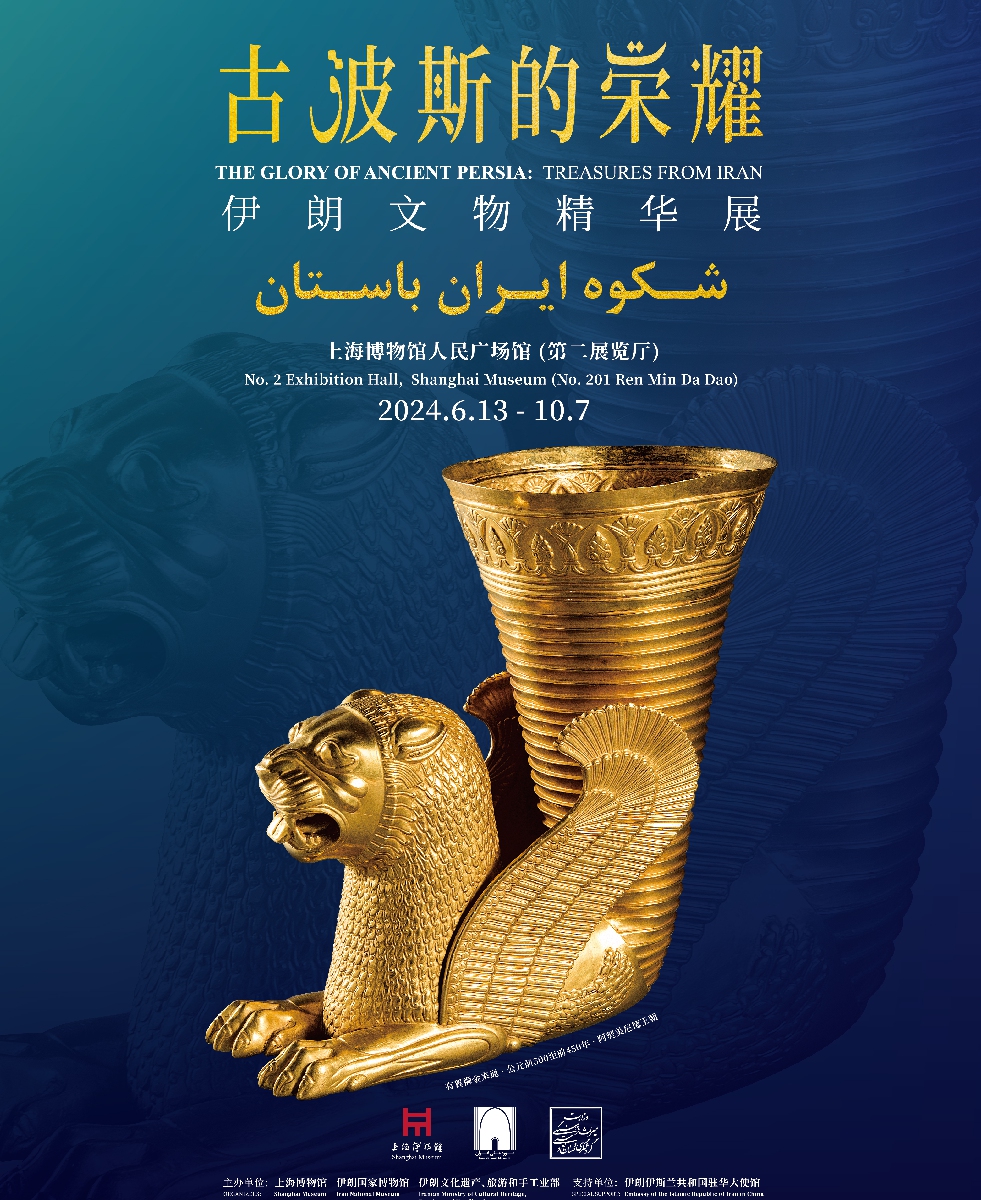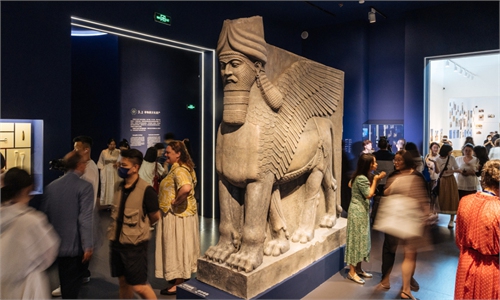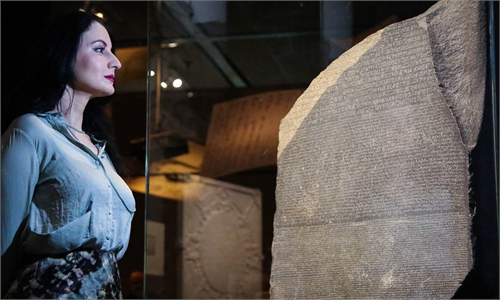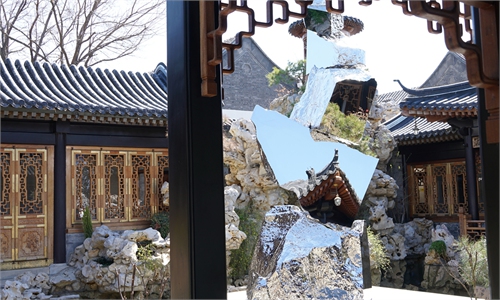
Promotional material for The Glory of Ancient Persia: Treasures from Iran. Photo: Courtesy of Shanghai Museum
In the soft glow of the lights, ancient artifacts from Iran are displayed in a deep blue exhibition hall, each piece whispering tales of the distant and illustrious Persian civilization.
The new exhibition, The Glory of Ancient Persia: Treasures from Iran, is set to kick off at Shanghai Museum on Thursday.
Gathering over 200 artifacts from both Iranian and Chinese institutions, the exhibition delves into the rich heritage of ancient Persia and its long-term connections with China, offering visitors a unique opportunity to explore the intertwined histories of these two ancient civilizations.
Historical records attest to the enduring bilateral relations between China and Iran, ancient interactions that date back over 2,000 years to the opening of the Silk Road, noted Iran's Minister of Cultural Heritage, Handicrafts and Tourism Seyed Ezzatollah Zarghami in a forward he wrote for this exhibition.
"It is hoped that the exhibition will enable visitors to better understand Iranian and Chinese civilization, and contribute to the promotion of exchanges and mutual learning among civilizations," Zarghami told the Global Times at a media preview for the exhibition on Wednesday.
Many exhibits showcased at the exhibition witnessed the long-standing ties between the two countries.
One is the "Brocade with the pattern of a pair of birds in a pearl-roundel" from the Tang Dynasty (618-907), which was excavated from the Astana Tombs in Northwest China's Xinjiang Uygur Autonomous Region. The design was a typical art style of ancient Iran's Sasanian Dynasty, which spanned from the 3rd to the 7th century.
Another is the "Glazed tile with a dragon" from the 13-14th centuries, the time of the Ilkhanate Dynasty in Iran. Chinese visitors can feel the beautiful time-honored connection between the two countries, the moment when they see the exquisite Chinese-style dragon design on this tile, which was found during an excavation in Iran's West Azabaijan Province.
"Through the two exhibits, we can imagine ancient Iranian artisans designing brocade patterns in Xinjiang, and ancient Chinese craftsmen participating in making tiles on the Iranian Plateau," the exhibition's curator Wang Yue told the Global Times on Wednesday.
Divided into three main parts, the exhibition presents a panorama of Iranian history, starting from the prehistoric period through the Achaemenid, Parthian and Sasanian empires and on to the Islamic dynasties that followed.
Visitors are able to take a closer look at some of the most representative exhibits that reflect the highlights of ancient Iran's art, culture, aesthetics and crafts, such as its unique artistic presentations of animal and plant images.
The "Gold rhyton with a winged lion," for instance, is a must-see artifact collected by the Iran National Museum that dates from 500BC-450BC, during the Achaemenid Dynasty.
A rhyton is a vessel used for drinking or pouring during ceremonial rites. The rhyton on display combines a winged lion body with its almost conical vertical cup body. The lion has an open mouth, and its head, neck and chest are covered by its mane. The ends of its wings are elaborately decorated with three rows of feathers.
This rhyton shows the high artistic accomplishments of the ancient Iran in dynamically depicting animals, Wang commented.
Ancient Iran and China, situated at the opposite ends of the vast Eurasian continent, were both important driving forces for economic and cultural exchanges along the Silk Road, said Shanghai Museum's director Chu Xiaobo.
"Through the Silk Road network, ancient civilizations exchanged goods, shared ideas and blended cultures, which greatly promoted the development of human civilization," he noted.
The free exhibition was jointly organized by the Shanghai Museum, the Iran National Museum, and the Iranian Ministry of Cultural Heritage, Tourism and Handicrafts. It is scheduled to end on October 7.




